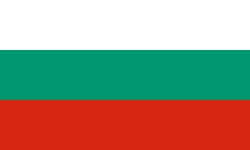Kim Gevaertová
| Kim Gevaertová | |
|---|---|
 | |
| Osobní informace | |
| Narození | 5. srpna 1978 (44 let) Lovaň |
| Choť | Djeke Mambo (od 2010) |
| Některá data mohou pocházet z datové položky. | |
| Přehled medailí | ||
|---|---|---|
| Atletika na letních olympijských hrách | ||
| zlato | LOH 2008 | štafeta 4 × 100 m |
| Mistrovství světa v atletice | ||
| bronz | MS 2007 | štafeta 4 × 100 m |
| Halové MS v atletice | ||
| stříbro | HMS 2004 | běh na 60 m |
| bronz | HMS 2006 | běh na 60 m |
| Mistrovství Evropy v atletice | ||
| stříbro | ME 2002 | běh na 100 m |
| stříbro | ME 2002 | běh na 200 m |
| zlato | ME 2006 | běh na 100 m |
| zlato | ME 2006 | běh na 200 m |
| Halové ME v atletice | ||
| zlato | HME 2002 | běh na 60 m |
| zlato | HME 2005 | běh na 60 m |
| zlato | HME 2007 | běh na 60 m |
| Mistrovství Evropy v atletice do 23 let | ||
| bronz | ME23 1999 | běh na 100 m |
Kim Gevaertová (* 5. srpna 1978, Lovaň) je bývalá belgická atletka, běžkyně na krátké sprinty a členka belgických štafet na 4 × 100 metrů.
V roce 2002 se stala vicemistryní Evropy v běhu na 100 a 200 metrů. O čtyři roky později na ME v Göteborgu získala na stejných tratích zlaté medaile. Je trojnásobnou halovou mistryní Evropy (2002, 2005, 2007) a halovou vicemistryní světa 2004 v běhu na 60 metrů. Jejím posledním medailovým úspěchem na mezinárodních soutěžích bylo vítězství ve štafetě na 4 × 100 metrů na olympiádě v Pekingu v roce 2008.
Osobní rekordy
- 60 m (hala) – 7,10 s – 3. březen 2007, Birmingham
- 100 m – 11,04 s – 9. červenec 2006, Brusel
- 200 m – 22,20 s – 9. červenec 2006, Brusel
Externí odkazy
 Obrázky, zvuky či videa k tématu Kim Gevaertová na Wikimedia Commons
Obrázky, zvuky či videa k tématu Kim Gevaertová na Wikimedia Commons - Kim Gevaertová na stránkách Světové atletiky (anglicky)
Média použitá na této stránce
The Canadian Red Ensign used between 1921 and 1957.
This image has compared for accuracy (mainly colors) using an image from World Statesmen. The only change is making the maple leaves green from red. This image has compared for accuracy (mainly colors) using an image from World Statesmen. The most recent version of this image has changed the harp into one with a female figure; see [http://flagspot.net/flags/ca-1921.html FOTW
US Flag with 48 stars. In use for 47 years from July 4, 1912, to July 3, 1959.
Flag of Second Polish Republic and later People's Republic of Poland in period from March 29, 1928 to March 10, 1980. Red shade used here is HTML "vermilion" #E34234. Proportion 5:8.
Flag of Jamaica. “The sunshine, the land is green, and the people are strong and bold” is the symbolism of the colours of the flag. GOLD represents the natural wealth and beauty of sunlight; GREEN represents hope and agricultural resources; BLACK represents the strength and creativity of the people. The original symbolism, however, was "Hardships there are, but the land is green, and the sun shineth", where BLACK represented the hardships being faced.
The civil ensign and flag of Belgium. It is identical to Image:Flag of Belgium.svg except that it has a 2:3 ratio, instead of 13:15.
This is the national flag of Belgium, according to the Official Guide to Belgian Protocol. It has a 13:15 aspect ratio, though it is rarely seen in this ratio.
Its colours are defined as Pantone black, Pantone yellow 115, and Pantone red 032; also given as CMYK 0,0,0,100; 0,8.5,79,0; and 0,94,87,0.Autor: Erik van Leeuwen, Licence: GFDL
Kim Gevaert at the Nacht van de Atletiek 2008
Flag of Second Polish Republic and later People's Republic of Poland in period from March 29, 1928 to March 10, 1980. Red shade used here is HTML "vermilion" #E34234. Proportion 5:8.























